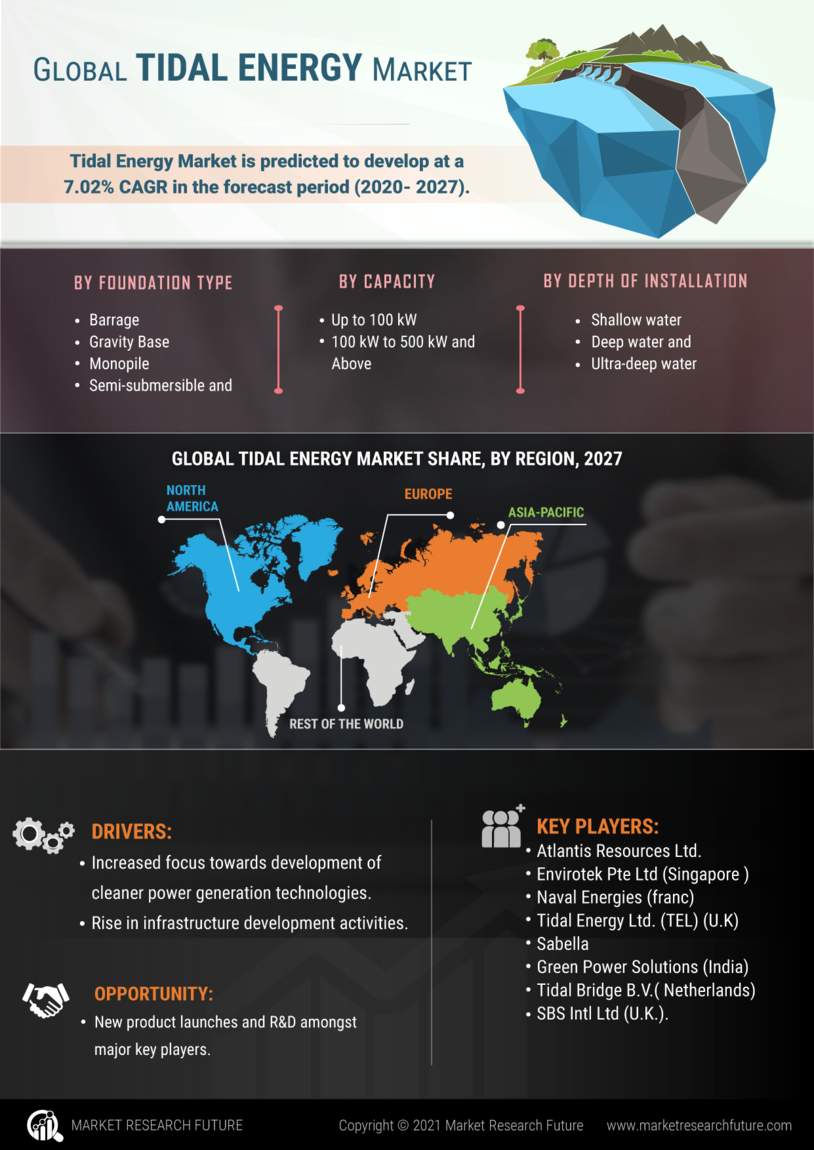The Tidal Energy Market is currently characterized by a dynamic competitive landscape, driven by the increasing demand for renewable energy sources and the global push towards sustainability. Key players such as Atlantis Resources (GB), Siemens Gamesa Renewable Energy (ES), and Verdant Power (US) are at the forefront, each adopting distinct strategies to enhance their market positioning. Atlantis Resources (GB) focuses on innovation in turbine technology, aiming to improve efficiency and reduce costs, while Siemens Gamesa Renewable Energy (ES) leverages its extensive experience in the wind sector to expand its tidal energy portfolio. Verdant Power (US) emphasizes partnerships with local governments to facilitate project development, indicating a trend towards collaborative approaches in the sector. Collectively, these strategies contribute to a competitive environment that is increasingly oriented towards technological advancement and strategic partnerships.
In terms of business tactics, companies are increasingly localizing manufacturing and optimizing supply chains to enhance operational efficiency. The Tidal Energy Market appears moderately fragmented, with several players vying for market share. However, the influence of major companies is significant, as they set benchmarks for innovation and operational excellence. This competitive structure fosters an environment where smaller firms can thrive by focusing on niche markets or specialized technologies, thereby enriching the overall market dynamics.
In August 2025, Atlantis Resources (GB) announced a groundbreaking partnership with a leading technology firm to develop next-generation tidal turbines. This collaboration is poised to enhance turbine efficiency by integrating advanced materials and digital monitoring systems, potentially revolutionizing the operational capabilities of tidal energy systems. Such strategic moves not only bolster Atlantis's competitive edge but also signal a broader industry trend towards technological integration.
In September 2025, Siemens Gamesa Renewable Energy (ES) unveiled its plans to invest in a new tidal energy project off the coast of Scotland, which is expected to generate substantial energy output. This initiative underscores the company's commitment to expanding its renewable energy footprint and reflects a strategic pivot towards harnessing untapped tidal resources. The project is likely to enhance Siemens Gamesa's reputation as a leader in the renewable sector, further solidifying its market position.
In July 2025, Verdant Power (US) secured a significant contract with a municipal government to deploy tidal energy systems in urban waterways. This contract not only demonstrates Verdant's ability to navigate regulatory landscapes but also highlights the growing acceptance of tidal energy solutions in urban settings. Such developments may pave the way for increased adoption of tidal technologies in metropolitan areas, thereby expanding the market's reach.
As of October 2025, the Tidal Energy Market is witnessing trends that emphasize digitalization, sustainability, and the integration of artificial intelligence in operational processes. Strategic alliances are becoming increasingly pivotal, as companies recognize the value of collaboration in driving innovation and enhancing project viability. Looking ahead, competitive differentiation is likely to evolve, shifting from traditional price-based competition to a focus on technological innovation, reliability in supply chains, and sustainable practices. This transition may redefine the competitive landscape, fostering a more resilient and forward-thinking tidal energy sector.


















Leave a Comment